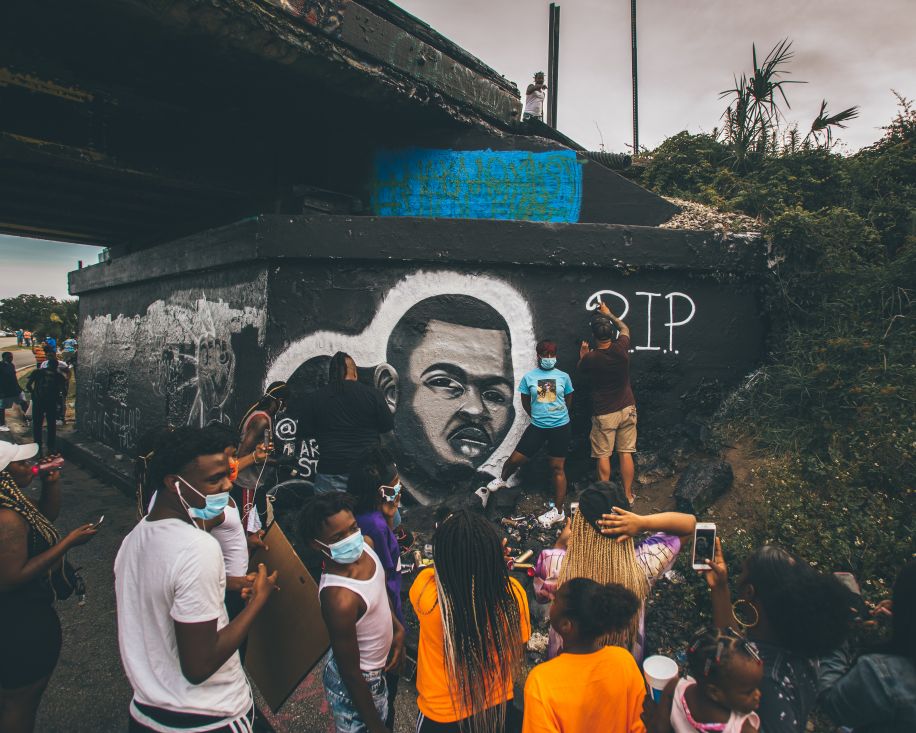 Deep South Visuals
Deep South VisualsBrandon Vessels has been an artist as long as he can remember. He grew up in Birmingham, Alabama, and served in the National Guard. After leaving the military, he began his career as an artist in Key West, Florida where he met his wife on a snorkeling trip. The two moved to Pensacola and now have a baby together.
Pensacola took notice of Vessels’ artwork at the end of May when his mural of George Floyd on the Graffiti Bridge was defaced. Floyd is a black father who was murdered by police during an arrest in Minneapolis, Minnesota. Vessels painted the mural of Floyd a few days after Floyd’s murder. Shortly after the mural was completed, an unknown person splattered brown paint over the mural. The incident quickly spread all over social media and local news. People gathered at the bridge daily, and it became the spot for local Black Lives Matter protests. Vessels repainted the Floyd mural, added a mural of Tymar Crawford who was killed by the Pensacola Police Department, and multiple murals of historical black figures.
His artwork on the bridge erupted a whole movement in Pensacola and redefined the Graffiti Bridge. Downtown Crowd interviewed Vessels for a special edition of our monthly creative feature.
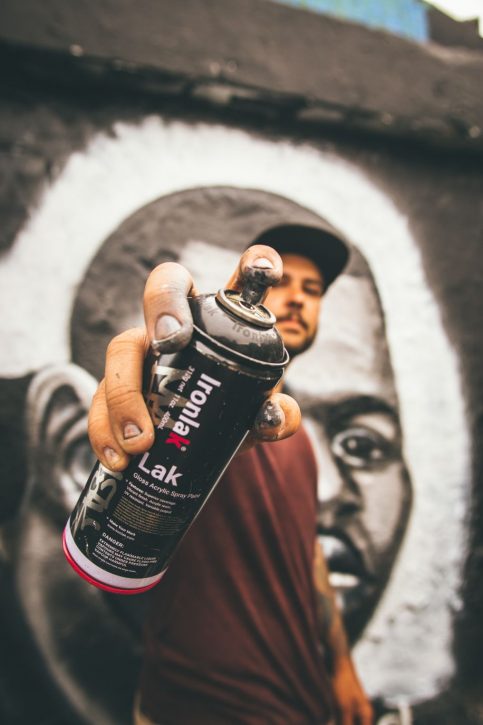
Let’s start with how you became an artist. What was the moment that you realized you wanted to be an artist?
I have always been an artist—since I was about old enough to hold a pencil. I always knew that’s what I wanted to do. I never wanted to be an astronaut or a scientist or anything like that. My dream was to make art for a living. I kind of got away from that for many years while being in the military. I had a different mindset when I was in the military. I found myself after I got out of the military in 2013. In 2013, I started pushing toward my art. It helped me heal and see who I was again. It helped me get out of the mindset I was stuck in.
So, did you begin your career as an artist in Pensacola?
I already had a professional art career in Key West, Florida. I was selling paintings in a couple of galleries down there. I also painted live for music festivals. I got into Art Basel this year for mural work. That’s really when my spray painting kicked off. I picked up spray painting a couple of times before, but I didn’t take it quite that serious then. After Art Basel, I really progressed in spray painting and started pushing more into it.
One of the first times I saw your artwork was when you painted Salvador Dalí on the Graffiti Bridge. Is street art a passion of yours?
Absolutely. I really want to focus on street art. I still want to sell paintings and be in galleries and be an artist of that form, but I truly love giving to the public. Not everyone can afford one of my $5,000 paintings, but everyone can come see my art on a bridge or on a building. Dalí is one of the fathers of my art career. He just pushed me in so many ways to think outside of the box. Dali was a brilliant mind and inspired me.
Your mural of George Floyd on the Graffiti Bridge gained a lot of attention and even more when it was defaced. What motivated you to paint Floyd on the bridge in the first place?
It was Memorial Day night. I had just finished up painting an American flag in a soldier’s hands with white gloves as being presented to the person who lost someone. I was tired, came home and I was sitting down relaxing. I saw this video of Floyd, and it disturbed me to the point that I couldn’t even sleep. I can’t understand how you can stand there and video it; I can’t understand how a police officer can’t have some compassion for these people begging to let this man breathe. It just disturbed me on every level. Being an artist, I knew I had to do something. That was really the only thing I thought I could do was go and paint something nice for the man. Bring awareness to his life and what’s going on in our country. So, that very next morning, it was raining. It was like every sign in the universe was telling me to stay away, but I stayed out in the rain and painted his portrait.
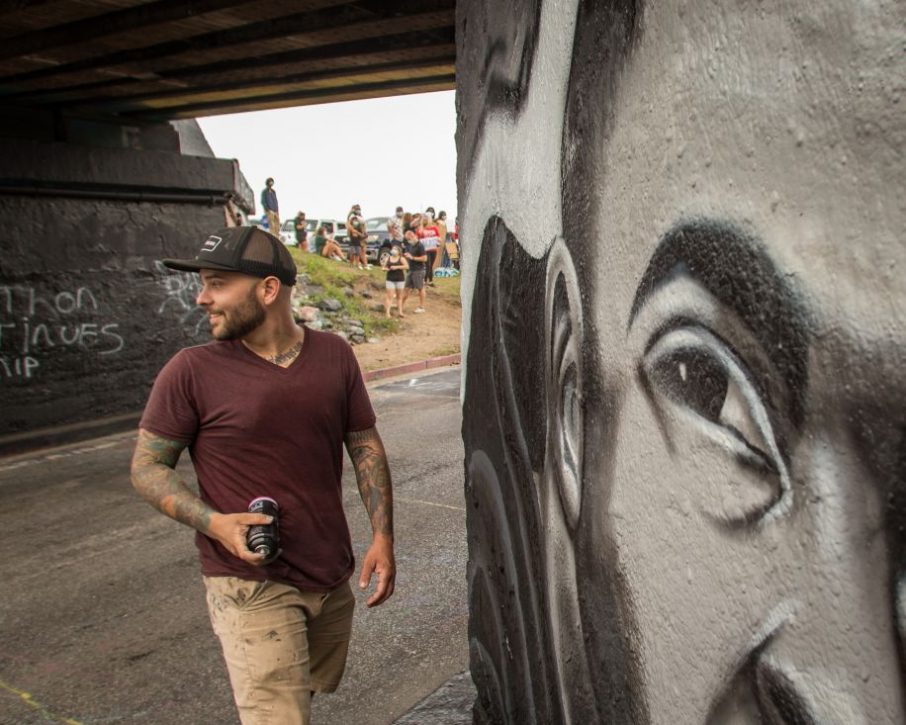
When you finished painting it, what reaction were you expecting from the public?
Truly. I just thought it would be something nice to go do. Painting on that bridge is like a Mandela Effect. You do it one day, it’s gone the next. That’s what I expected. I expected it to be painted over. I didn’t expect it to be painted over the way it was painted over. Hate covered that up. I wasn’t going to let that be the last word. I intend to keep that up for the city. They obviously want to see it. I had so many people reach out to me after the mural got covered. I had so many ask me to go back out there and paint it again. I had to. Not because I felt obligated but because I felt I needed to. That’s when the community made this a thing. We all came together when we saw the hate that tried to shove out our love. I got drawn into this whole movement. It birthed itself.
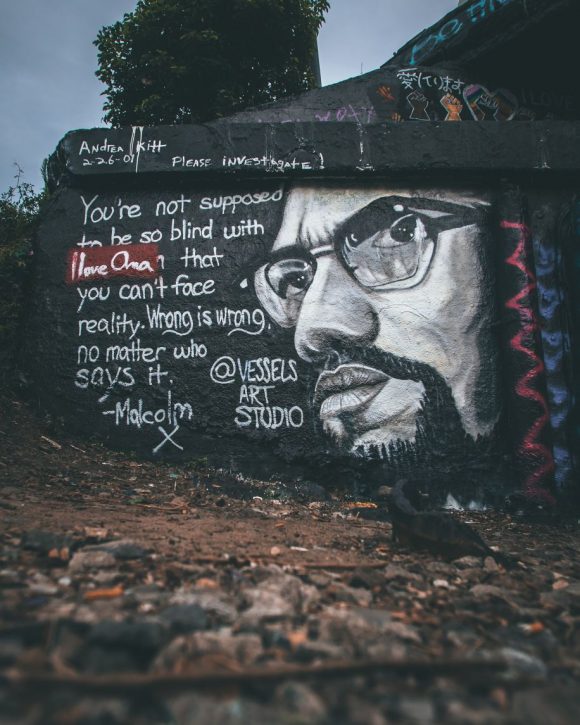
Have you ever been moved by the Black Lives Matter movement before?
Absolutely. I’ve had many brothers along the way who have been discriminated against. I was in the military. I fought side by side with these men and women. We bleed the same blood when we are hurt. I feel very strongly for this movement. I see there is so much going on in our country. These people are being persecuted, and it’s not right. Period.
Since your Floyd piece was defaced, people have been gathering at the bridge daily. Do you think your art has changed what the Graffiti Bridge means to Pensacola?
It brings me to tears to see the community go out there every day. I can’t express the level of gratitude I have for these people. They have come together to show love when everyone else has shown hate. It’s all because of a painting. That just touches my heart. I think there is going to be a shift in what’s going on with the Graffiti Bridge. I think it will be used to memorialize events like this from now on. I believe that we have caused a big change here in Pensacola. Not only in Pensacola hopefully around the world we can be used as an example. People are still spraying what they want on the bridge. There is a new level of respect since the incident. They are not tagging over these memorials. I think that’s absolutely beautiful because normally no matter what the picture is it could be Jesus, it could be a historical figure and people come out there and scrawl stuff all over it every night. I cannot believe that these paintings have made such an impact on our community.
You also painted historical figures, such as Tymar Crawford, Malcom X and Rosa Parks, in a similar style to Floyd’s portrait. Why?
I want to feature all of the historical African-American figures who have either lost their lives as martyrs or who have stood for a cause that is worthy. I feel like certain people should be immortalized, and the people who are on that bridge need to be immortalized.
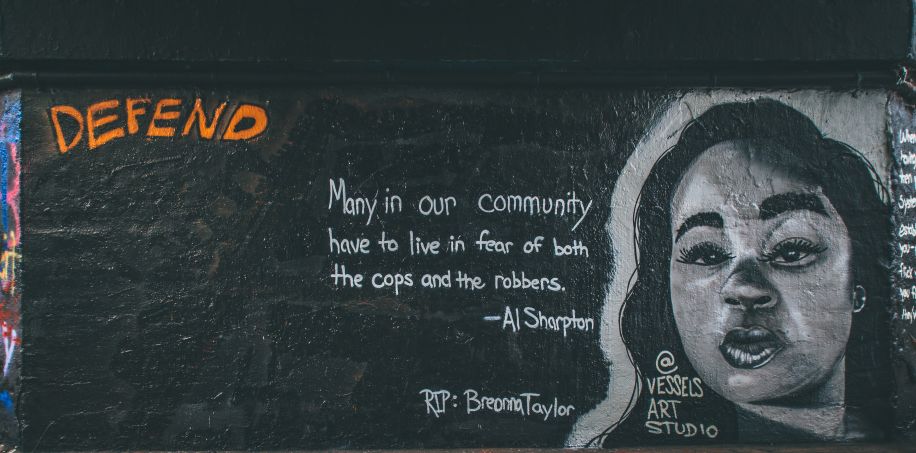
How do you think being a part of this movement at Graffiti Bridge is going to impact your career as an artist?
Hopefully, it will make my voice louder. I would like to use that voice for good. I would like to go around the world making these messages. That’s my dream is to spread peace with art. Bring love and culture across the world. It’s the only way our society will continue to grow. We are in the new renaissance, in my opinion.
What’s your next chapter? Are you working on an art project for Pensacola?
I’ve started it. I didn’t intend to start it, but overnight, they raised $1,800 for paint for me. That woke me up. I’m asking for $10,000. I want to approach our city council to make 10 murals across the city. I will donate my labor, and the $10,000 is a $1,000 budget for each mural to be completed. I want to do it on large buildings downtown. That way they can never be covered with hate ever again. I need possible business owners who are willing to donate walls. I want these people to be memorialized forever, and that’s my message. A better way to do that is to approach business owners and actually memorialize them forever on a building. I definitely want one mural to be George Floyd. He is the one who sparked this whole movement. I want there to be a list for the community to vote on. I don’t want it to be about me and my beliefs. I want it to be about bringing us together.
Vessels has since raised $2,700 toward this project. If you would like to donate, his Cashapp is $BrandonVessels. For more of his artwork, visit his Instagram @VesselsArtStudio.